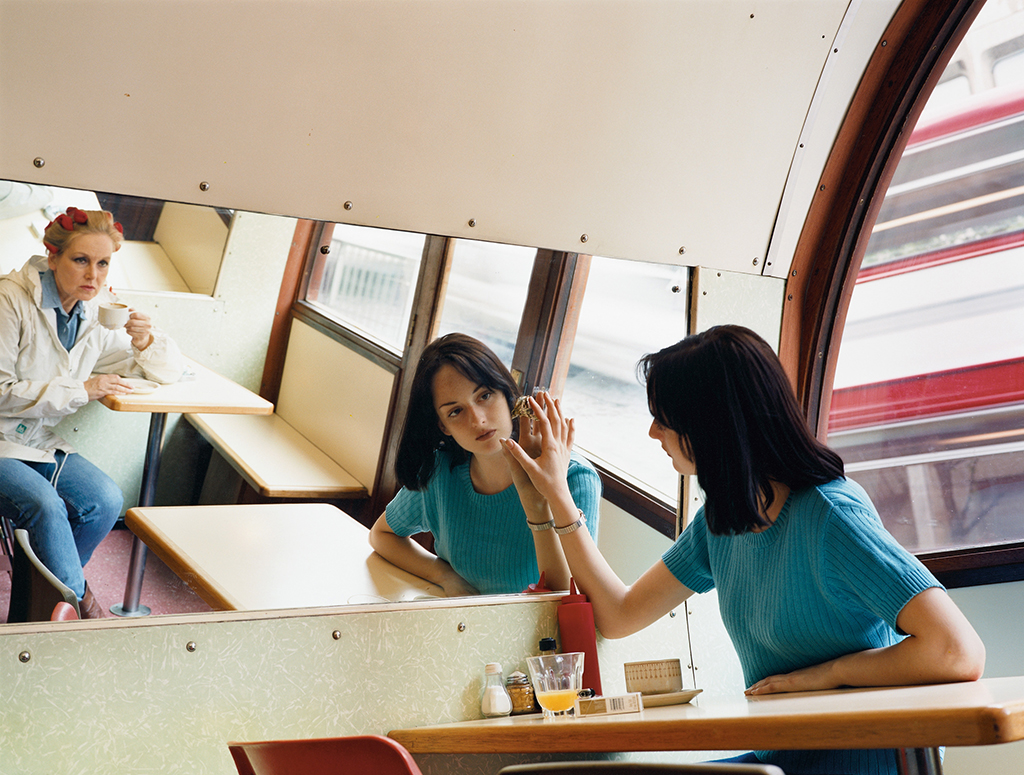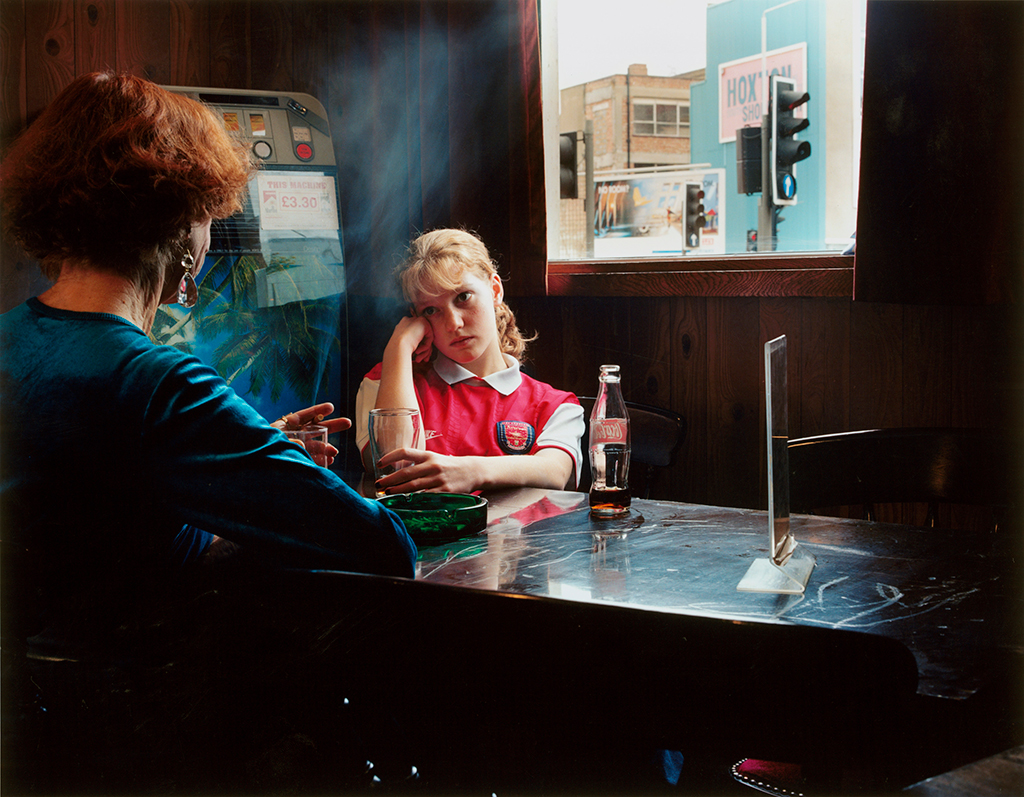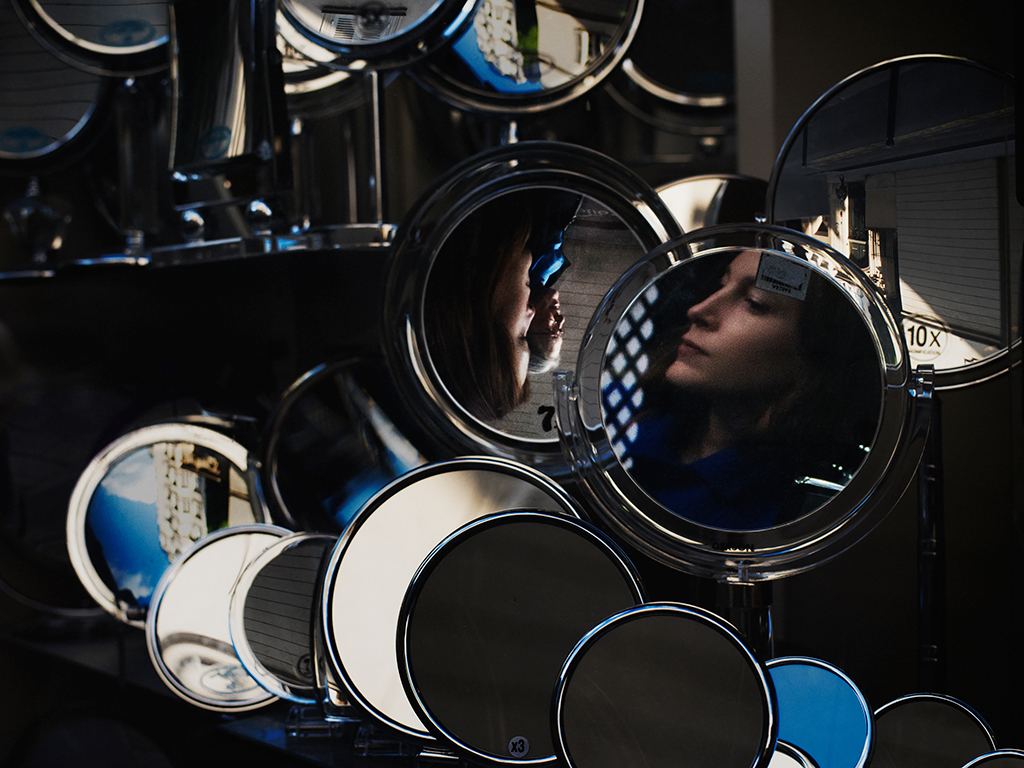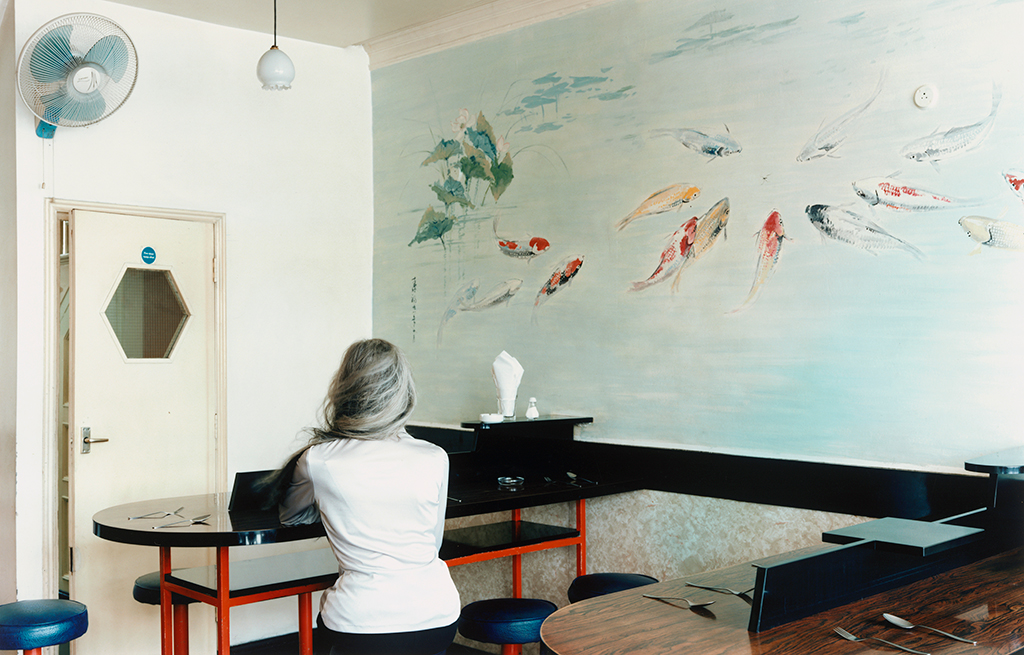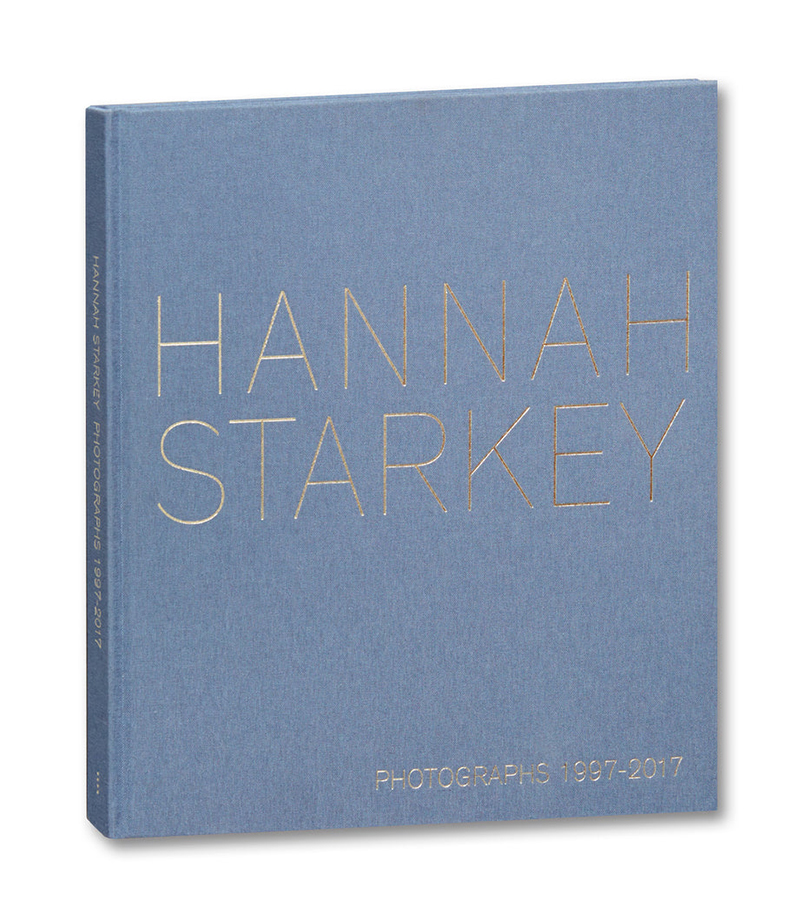To celebrate International Women’s Day, Amy Davies speaks to Hannah Starkey, who has spent the past 25 years framing what it means to be female
It’s been more than two decades since Hannah Starkey burst onto the British photography scene with a hugely well-regarded graduate show at the Royal College of Art in London. In the quarter century which has elapsed since 1997, she has dedicated her time to building up a body of work that turns the lens on women, reframing and redressing what she sees as traditional and patriarchal representations.
In 2017, a monograph of her two decades of work was published by Mack Books, while later this year a major retrospective, Hannah Starkey, will open at the Hepworth Gallery in Yorkshire. Given the scope of her output, she seemed like the perfect photographer to speak to ahead of International Women’s Day (8 March).
Talking to me from her studio in London, Hannah took the time to explain what it is about this lifelong career focus that has kept her occupied for so long. ‘I’d just started working in the mid-to-late ’90s when I became very aware that I was a young woman in quite a male-dominated industry – particularly in the commercial sector.
I was sort of aware of how images of women were getting more explicit and specific. I decided to try to forge my way own through by creating a different type of image of women. From my perspective at the time, women were kind of shaped through the male gaze, and I didn’t like the feeling; and I didn’t like the repercussions of it.’
There has been much written about how men and women might photograph each other differently, and while it’s not something that is necessarily straightforwardly easy to quantify or put into words, it’s Hannah’s belief that generally you can tell who’s behind the lens. ‘I just kind of read the message differently when it’s a female photographer, I guess.
I think it’s kind of a more “experience” led thing, rather than just projecting how a woman might act or feel. I guess the female eye senses anything that’s tied up in those kind of sexualised images – the sort of image that’s being used to sell stuff. It gets a bit obvious – and you start to think there must surely be a different way of selling something.’
Hannah notes that things have changed – and are continuing to change – in the time that she has been working, with a continual evolution in both how women are represented and the access women have to make those representations themselves. ‘When you come into your professional career or your education, you will always have a legacy of what’s gone before you. You tend to want to rebalance or readjust that. So for me, that was all about the representation of women and to try to find a different way.
‘I guess from about 2000 onwards, the mainstream media seemed to be very heavily influenced by the language of porn, and there was a while when it became so suffocating. It seemed like the “go to” way to present women – it’s not about prudishness or double standards, it’s just that there are many ways to make a woman look attractive but the dominant aesthetic was just this one way.
Now I think we’re at that point in photography history where we are making a change – representation is far wider and far more inclusive and I think that’s kind of amazing. I graduated in 1997 and since then I think there’s been a little revolution in female photography. Whether we’d call it instead the “female gaze” is another question, but it’s just kept growing.
That said, I still see hyper-feminisation and hyper-sexualisation as being extreme in the mundane and the mainstream – I have always worried about that becoming normalised… it’s very hard for women to live in that image culture with attitudes that then play out.’
We live at a time where gender, and comments made about it, are hugely political and often-times controversial. It’s easy to therefore think of photographers like Hannah Starkey as political photographers – and indeed, she counts herself as such. ‘When I started there was this real culture of putting down women with the phrase “wimmin’s”.
It made me feel as a young photographer that this was perhaps a “club” that wasn’t so welcome to women – maybe even felt threatened by them and that came out in this casual sexism. My active resistance was to make women my subject matter, and also consider or refer to myself very deliberately as a female photographer with a female perspective.
There was this culture that would openly laugh at women’s abilities – it’s so obvious, it’s all about control. At that point, I wanted to say – “I’m a woman, I think women’s lives are important” and really spend the whole of my life responding with photography to how I experience being female.’
Hannah’s work has a very stylistic aspect to it, but she doesn’t work on ‘projects’ so much as she sees her whole output as one lifelong catalogue of work on her subject. Characterising that work in one given genre is tricky, because much of it blurs the boundaries between street, portraiture, documentary, fashion and fine art.
One thread which runs throughout however is the purposeful construction of the female ‘character’, done deliberately in order for the viewer to project themselves into the narrative. ‘Photography’s really interesting in that it’s silent and still. You have to do most of the work yourself when the narrative is ambiguous.
Your biases – even unconscious ones – can tell you as much about yourself as it does the subject. That’s something I’m really interested in – how people read images. It’s also intriguing in an age where the moving image is so easily created that it’s stills photography which remains so prevalent. Our relationship with it is really amazing – it can make us feel good, or it can make us feel shit about ourselves.
My photographs are attempting to set up that kind of critical engagement. My hope is that even if you see one of my images, you might be enticed enough to look at more, or read what they’re about, or just try and figure out that image and its relationship to you.’
The women in Hannah’s pictures are sometimes actors, hired specifically to create a certain look; but just as often, they are people she has found while out and about who happened to have the right look. If the image has been inspired by a particular location, she may also just head there and hope to find the right character. As a woman photographing other women, there is arguably a different dynamic at play than when genders are mixed.
‘I’ve been asked about this for 25 years,’ she laughs when I raise the thought. ‘My answer about whether it’s easier, or at least different, is absolutely yes. At first maybe it was kind of a novelty – there were a lot fewer female photographers around. But you can also use sexist notions to your advantage.
I realised that often women are not taken as seriously as photographers, and are often dismissed. I found as a woman going into situations or approaching people on the street, that was a massive advantage – I loved that secret superpower I felt I had, I felt as a woman I could get in anywhere.
Being female is perceived as less threatening – and that makes my job easier. I also think this has played out recently in documentary and war photography. When it’s from a female perspective, you get quite a different focus on different subjects – I think it’s been amazingly good for photojournalism.’
As someone who is keen to stay as low-key as possible, Hannah keeps her equipment to a minimum – usually carrying just a camera and a reflector. She now works primarily with a medium format digital camera (a Pentax), something she describes as a workhorse, and a necessity for creating the kind of large-scale prints that she is known for.
That said, she’s also used a 10×8 bellows camera for some pieces, something she loves for its simplicity, but which falls down for being prohibitively expensive. ‘It has a different quality of colour and merging of tone than digital,’ she says. ‘Digital is very different – there’s almost no point comparing them. I love digital because it gets you into all sorts of interesting places and areas, like Photoshop.’
Open construction
Digital manipulation is of course ubiquitous in modern photography, and it’s something which Hannah has used when necessary – some of her work is openly ‘constructed’. But it’s interesting to contrast that idea with the fact that it’s the negative aspects of manipulation which add to the problems surrounding the representation of women and girls.
As a mother to two young women – her daughters are 19 and 20 – she’s seen first-hand what excessive retouching can do and also feels a responsibility to address that, or at the very least to present alternatives. ‘It can be a really confusing time growing up, trying to figure out your identity.
When you’re constantly being bombarded with images that show perfection, that can make it even harder. At 50, I know how to protect myself from those images but when you’re brand new and thinking these images are normal, that kind of takes its toll. It’s very tough for girls to live up to expectations in a world that has already been pornographised and they themselves have been objectified from about the age of 12 – if not younger.
As my girls were growing up, I tried to educate them. I showed my ten-year-old daughter and explained how things had been changed, but the image was so powerful that even though she clearly realised all this, she’d still say “yeah but she looks good though doesn’t she?” Yes – but she also doesn’t exist.
Now you also have the proliferation of filters on platforms like Instagram, and it makes you question where our ideals of beauty are coming from. Over the years I’ve noticed that it’s difficult making work about women because it gets ghettoised very quickly either into the feminist camp or dismissed because of the female subject matter. Working against all of these attitudes is what pushes me.’
The first major retrospective of Hannah’s career is due to take place from October at the Hepworth Gallery in Wakefield. Hannah doesn’t actively seek out exhibitions or books projects and is satisfied that it’s taken 25 years to get to this point. ‘I think the work finds its place in the world.
I’m not proactive in that way. If you build a good body of work and you’re lucky, maybe the right person sees it at the right time. I’m quite happy to wait a whole career for that so that I don’t feel any pressure to produce. I feel like I’m on my own path with my own agenda – and when you’ve been thinking about the same issue for 25 years you can be pretty sure you’re doing the right thing.’
The exhibition, Hannah Starkey, will run at The Hepworth, Wakefield, from 20 October 2022 until 30 April 2023. For more information, visit hepworthwakefield.org. Photographs 1997-2017, by Hannah Starkey is published by Mack Books, RRP £40, ISBN: 9781912339198
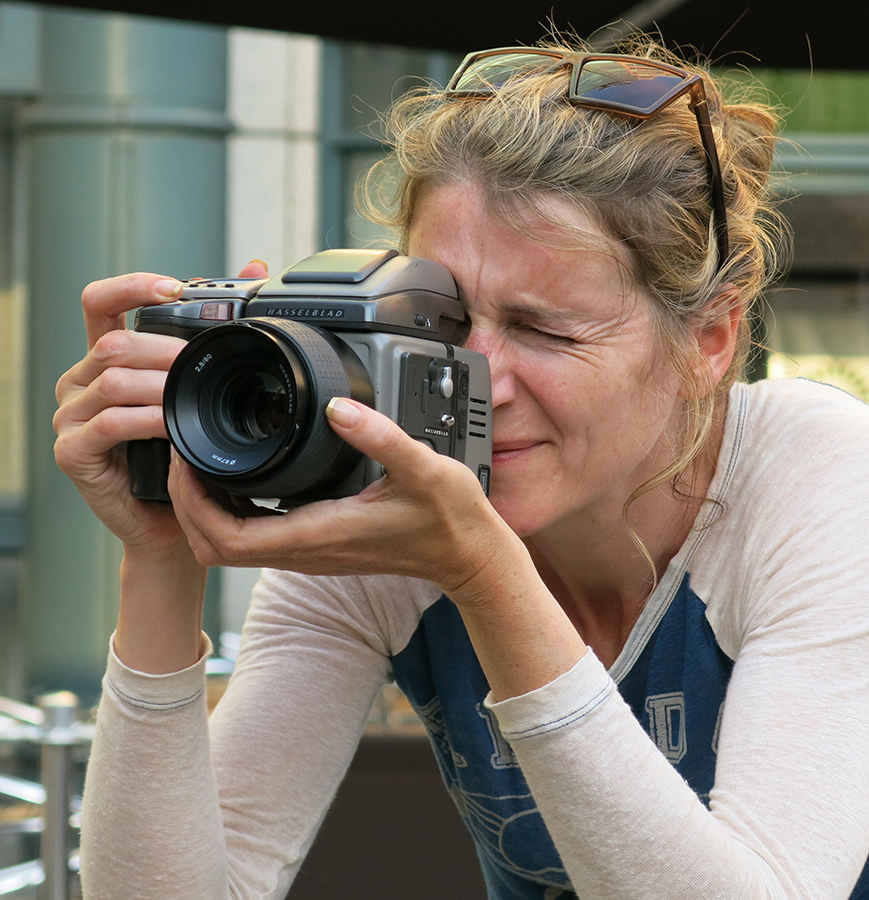
Born in Belfast, Hannah Starkey is based in London. Specialising in staged portraits of women, her work has been exhibited several times. In 2019, she was awarded an Honorary Fellowship from the Royal Photographic Society.
Related Articles:
Best photography exhibitions to see in 2022
Celebrating one of the greatest women documentary photographers
British Culture Archive to present ‘A Woman’s Work’ exhibition


